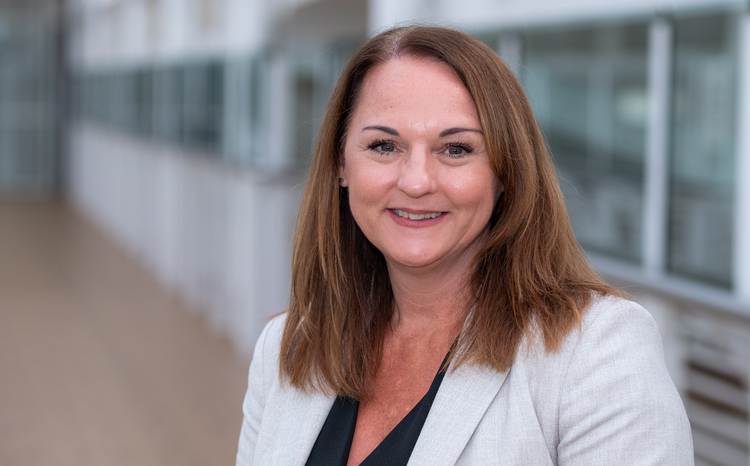Crossed wires
- 9 August 2005
 Daloni Carlisle
Daloni Carlisle
It was not an auspicious start when the first booking was made with web-based referral (WBR) – the web-based stand alone version of Choose and Book – in Wandsworth PCT on 21 June 2005.
WBR has been developed as a stand alone interim fix for practices not yet able to connect their system to the NHS spine or through to local hospital systems, and unable to use the integrated Choose and Book system.
The GP’s screen froze midway through making the referral, refusing to issue a password. It took Dr Stephen Deas from the Mayfield Surgery in Roehampton 25 minutes to complete the process. When he finally succeeded the hospital couldn’t see it.
Nevertheless, Dr Deas, and his patient had a fascinating half hour. "He was an IT boffin and just loved it," says Dr Deas. "The IT people at the PCT were quick to respond and came over to the surgery to sort it out."
Meanwhile up at Queen Mary’s Hospital, Roehampton, the Choose and Book team and Tom Milligan, the representative from software authors Atos Origin, tried to work out what was going on in the call centre.
QMH is using indirectly bookable services (IBS), the interim measure that enables hospitals without a compliant Patient Administration System (PAS) to accept bookings through Choose and Book.
Polly Farmar, choose and book manager at QMH, explains: "We hadn’t correctly populated the DoS [directory of services] and entered the call centre workgroup."
Even after correcting that only half the booking managers could see the referral. "It turned out there was a second problem involving the smartcard registration," says Farmar.
The patient duly rang to make his appointment. "He was terribly impressed," says Farmar. "He wanted to come and see the call centre staff when he came in."
Smartcards
When the referral letter came through, too few staff had been issued with smartcards for it to be handled electronically within the hospital. So call centre staff printed it off, handed it to the ENT consultant, who promptly asked for the patient to attend a different clinic.
Farmar says: "Fortunately this was on the same day and the patient was fine when the call centre staff contacted him about it."
Just getting to this point had been an exercise in overcoming obstacles. "We had wanted to go live when the IBS software was released on 30 May," says Farmar. "But when we started to populate the DoS we ran into a problem. The hospital is very unusual in that it is owned by the PCT and there was no way of recognising this in the C&B software."
That was put right by Cerner in the US on 16 June and three working days later the first referral was made. "We were very proud," says Farmar.
Farmar is an unashamed Choose and Book enthusiast. She is also a realist. "It hasn’t been easy," she says. "It’s been quite a learning curve. But when you start something new you expect to find new things to do."
Smartcards and getting staff registered with the registration authority (RA) is an outstanding issue. "We have not been able to RA all our out-patient and administrative staff yet so we are unable to enter them on to workgroups for reviewing the referrals," says Farmar.
They are currently using a manual system – printing the letters for clinicians to review referrals – but expect this to be solved very soon. "We are rolling out the smartcards slowly but surely," says Farmar.
With 15 bookings and counting, she’s confident too that the issue of the hospital booking staff being unable to see a referral has been solved.
Not perfect yet
|
"It has to become quicker and slicker if GPs are really going to use it." — Dr Stephen Deas, GP at the Mayfield Surgery, Roehampton, London
|
Dr Deas is still not convinced that WBR is really usable by GPs in its current form, though.
The site is difficult to use and has no help functions, he says. "It’s difficult to follow the flow of tasks."
He has had to take various detours in order to get the system to produce passwords. "Unless you know how to do this you end up with a frozen screen," he says.
Crucially, it is taking on average six minutes to make a referral. "Yesterday I had five referrals. Using WBR it would have taken me an extra half hour," he says. "It has to become quicker and slicker if GPs are really going to use it."
It isn’t saving administrative time just yet, according to Dr Deas. "We use EMIS GV and so far we have been unable to cut and paste past medical histories or current medications into the referral letter. That means more typing for my secretary and more dictation for me. Having compatible software would make it much easier."
Farmar sees these problems in primary care and those at the hospital end as natural teething problems that will be overcome. "I am confident that our numbers will be going up fast," she says. "It’s all down to getting the GPs on board so we need to solve their problems."
Nor is it all problems. For example, clinicians in primary and secondary care have been keen to get involved.
She says: "The huge advantage of the whole process has been that it has provided opportunities for both sides to talk to each other, appreciate each other’s roles and problems and find workable compromises."
The hospital has an experienced call centre that has been using the Revive system since 2001. "They know what they are doing so issues like having to do a double entry on PAS and the C&B system are not a problem for us."
Slow changes
She is delighted to have IBS as without it Queen Mary’s would not be able to move onto Choose and Book. She intends to spend the next few months getting IBS right and then switch over to the fully integrated system slowly as the PAS becomes compliant in a new PFI building due to open in 2006.
As Farmar says: "We will make changes slowly but in the meantime we will getting the referrals in and making the bookings."
It’s likely that other sites will be experiencing similar problems. According to NHS CfH, 13 out of the 25 hospitals using Choose and Book by 26 July were using IBS.
By 4 August, 45 PCTs were using Choose and Book and 2,395 patient appointments had been made across 35 specialities – 1300 of these since 1 June. About half of all appointments had been made using IBS.
A spokesman said: "NHS Connecting for Health is pleased to have delivered Indirectly Bookable Services, a key feature of Choose and Book release 2.0, as scheduled on 30 May.
"Furthermore, we’re pleased that the infrastructure is now in place that will enable PCTs and Trusts to implement Choose and Book and patient choice at the point of referral, regardless of whether compliant systems are in place or not."
NHS CfH was not aware of any problems with IBS on a national scale.





